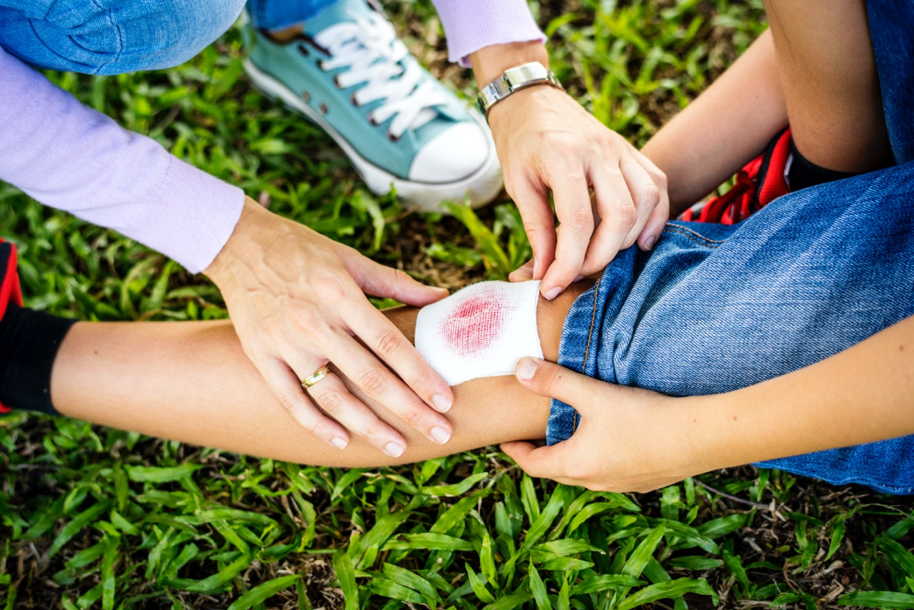
Kids get cuts and scrapes. It’s a regular part of childhood. Likewise, worrying about your child comes with the job of being a parent.
Knowing what to do when your child gets hurt is just one more way you can prepare for the inevitable bicycle crash, knee scrape, or roughhousing injury.
Basic Treatment for Minor Cuts and Scrapes
If your child should skin their knee or otherwise receive a cut, follow these basic steps:
- Apply pressure. Use clean gauze or cloth and apply pressure to the cut for five to ten minutes. It’s important that you don’t interrupt the pressure to peek at the wound – this will cause further bleeding.
- Once the bleeding stops, wash the wound with soap and water. If your child objects or is in too much pain to get it properly cleaned, soak the wound in the bathtub. Cleaning the wound thoroughly is important to prevent infection.
- After the wound is clean, bandage the wound properly. Apply a small amount of antibacterial ointment to the wound. Keep it moist and cover it with dry gauze or bandage until the wound is healed.
How Do I Know if My Child Needs Stitches?
It can be tough to know whether or not to take your child to a doctor or to simply clean the wound and apply a bandage. Most cuts that require stitches can still be closed up to 24 hours after the incident, so if you have any reservations about an injury, the best option is to see your doctor as soon as you can.
Your child might need stitches if:
- The wound has visible dark red muscle or yellowish fat
- Gaping cuts more than ½ inch long
- Cuts that go all the way through the skin
- Cuts in cosmetically sensitive areas, such as the face. These may or may not need stitches, but it is still a good idea to consult with your pediatrician to be entirely sure.
Preventing and Treating Scars
When it comes to cuts and scrapes, one of the biggest concerns for parents is whether or not their child will be left with a scar. Follow these tips for scar prevention:
Sun protection: Damaged skin is susceptible to discoloration from the sun. It’s important to keep an injury covered from the sun for the first 6 months. Use clothing, a hat, or sunscreen, but do not apply sunscreen until 2 weeks after the cut to give it time to heal.
Massage: Some scars may flatten more quickly when massaged. Apply soft pressure and move your fingers in a circular motion.
Silicone sheets: These will help soften, flatten, and improve the appearance of scars if used 12 hours or more a day.

